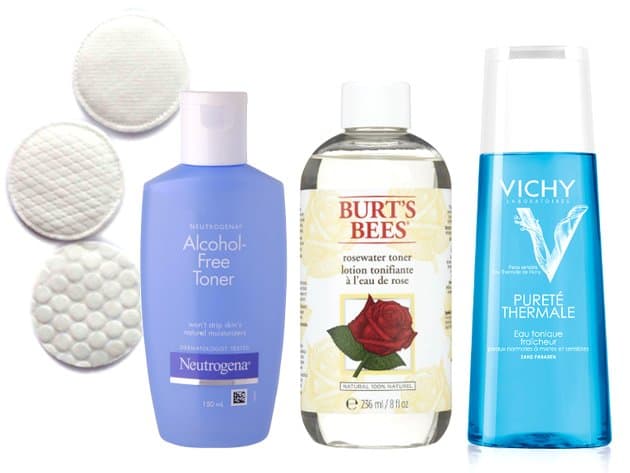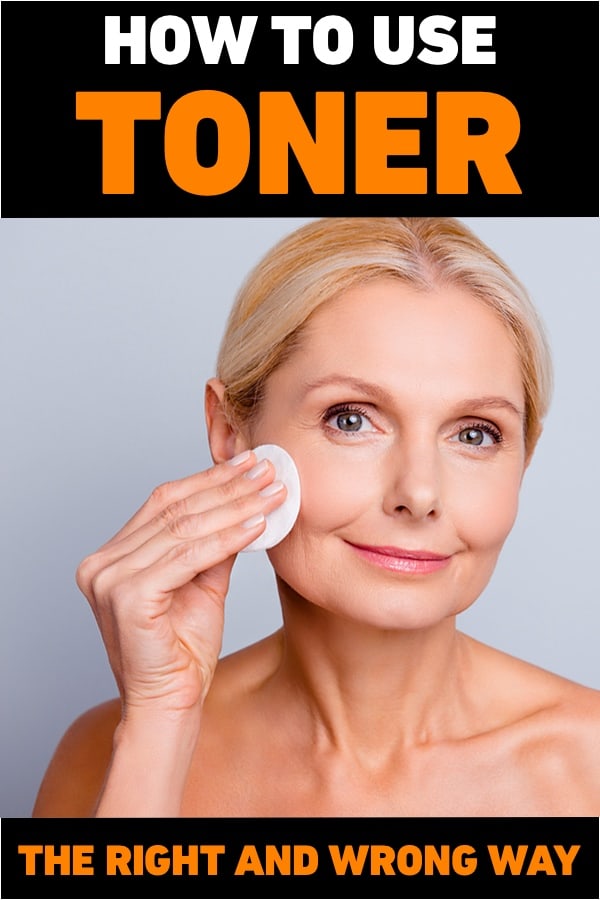Toning is a crucial step in a comprehensive skincare routine, and while its importance might be overlooked by some, for those who have incorporated it into their daily regimen, its benefits are indisputable. Toners are not only pivotal in cleansing and hydrating the skin but also in reducing pore size and restoring the skin’s delicate pH balance. Their application serves as a defensive barrier, guarding our complexion from numerous impurities.
Understanding the correct usage of toner is essential for maximizing its benefits. It’s a process that requires precision, typically applied post-cleansing and pre-moisturizing to ensure optimal skin preparedness for hydration. We apply toner with a gentle touch, using a cotton pad to distribute the product evenly across our face and neck. Moreover, when selecting a toner, we opt for formulations enriched with gentle, natural ingredients that nurture the skin without causing dryness.
Chapter Overview
What Is A Toner?

In our skincare routine, we often encounter an essential product known as toner. Initially, toners were designed to rid the skin of excess oil and restore its natural pH balance. However, today’s toners do much more than that.
The primary purpose of a toner is to thoroughly cleanse the skin, removing dust, pollution, and impurities. Most toners maintain an acidic composition, which can help the skin remain tight and protected.
Below we’ve outlined the major ingredients typically found in toners and their benefits:
- Hydration: Ingredients such as hyaluronic acid or rose water enhance moisture retention.
- Calming: Components like chamomile reduce irritation.
- Cleansing: Astringent substances, such as salicylic acid, combat acne and excess oils.
Toners are tailored for varying skin concerns and are available in different types:
- Hydrating Toners: Assist in moisture retention for dry skin.
- Calming Toners: Aimed to soothe sensitive skin.
- Astringent Toners: Typically used for reducing excess oiliness and fighting acne.
An effective ingredient list is key to addressing specific skin needs. Whether one’s goal is to hydrate, calm, or cleanse, the selection of a suitable skincare product is vital.
Thus, incorporating a toner into one’s daily skincare regimen can lead to improved skin texture and clarity. From plant extracts to essential oils, the compositions vary widely, and it’s crucial to choose based on personal skin needs.
How To Properly Use a Toner?

Before using a toner, it’s essential that we cleanse our face thoroughly. We should use a cleanser with warm water, massaging it gently to lift away makeup and dirt. After rinsing, cold water splashes are recommended to close pores, followed by patting the face dry.
Applying Toner with a Cotton Pad or Ball
- Moisten the Cotton: Dampen a cotton pad with toner, ensuring it’s moist but not overly wet. Cotton balls are an alternative, though pads tend to use less product. This step is crucial in ensuring we don’t waste toner.
- Wipe Across the Skin: With the prepped cotton, we wipe the toner gently over our faces, necks, and décolletage areas, avoiding lips and eye regions. Toner works to remove any residual impurities and dead skin cells, particularly from areas like the brows, nose sides, and near the ears, which cleansers may miss.
Additional Toner Application (Optional)
- Spritz for Moisture: For added hydration, we can mist our skin with a second toner. This should only follow after using a wiping toner, as a spray cannot remove impurities alone, it’s for diluting them.
- Allow to Absorb: We wait a minute to let the toner dry and absorb properly. Since most toners are water-based, this small pause allows it to penetrate the skin effectively.
Following toner application, we proceed with our skincare routine, applying moisturizer or other treatment products. Utilizing toner can be done both in the morning and at night, making sure to exfoliate and clear away any accumulated grime or dead skin cells.
Remember, the sequence in which we apply skincare products matters, and toner is a pivotal step that prepares our skin for moisturizers or treatments, maximizing their benefits. We hope this guide enhances your skincare routine.
Do You Use Toner or Moisturizer First?
When we incorporate toners into our skincare routine, we’re taking a proactive approach to remove excess dirt and impurities. Using a toner should come immediately after cleansing – it’s our skincare “appetizer.” The right order during the daytime routine should be: apply toner, follow with moisturizer, and finalize with sunscreen to ensure adequate SPF protection.
- Morning Sequence:
- Toner
- Moisturizer
- Sunscreen
In the evening, we follow a similar pattern: toner first to thoroughly cleanse the skin, then a hydrating product, like a serum or moisturizer, to nourish and hydrate the skin overnight.
- Evening Sequence:
- Toner
- Serum/Moisturizer
It’s also crucial that we select a toner that matches our unique skin type, whether it be combination, oily, or dry. Each skin type has distinctive needs, and the toner we choose should contain elements beneficial for our specific skin concerns. Remember, proper application and selection of skincare products make a significant difference in our overall routine.
Why Use a Toner?
Utilizing a toner as part of our daily regimen can significantly enhance our skincare routine by offering multiple benefits:
- Exfoliation: They provide a gentle exfoliation that is suitable for all skin types, including sensitive skin.
- Sebum and Oil Control: Ideal for oily skin, toners help in regulating excess sebum production.
- pH Balance: Toners aid in maintaining the ideal pH balance of our skin.
- Anti-Inflammatory: Components such as vitamin B5 and cucumber in toners can reduce skin inflammation.
- Acne Management: For acne-prone skin, toners can help minimize pores and treat acne without causing dryness or irritation.
- Texture Improvement: Regular use can improve skin texture and combat dullness, contributing to a healthier appearance.
Can You Make Your Own Toner?
Absolutely! Creating your own toner is a fantastic way to cater to your skin’s specific needs using natural ingredients. Here’s how we can do it:
- Green Tea Toner: Perfect for all skin types.
- Brew 1 cup of green tea.
- Add 1/2 teaspoon of honey.
- Cool the mixture.
- Stir in 3 drops of jasmine essential oil.
- Store in an airtight bottle in a cool place.
For those of us with normal or oily skin, consider an alternative:
- ACV & Lemon Toner: Specifically for oily skin.
- Mix 1 tablespoon of apple cider vinegar (ACV) with fresh juice from 1 lemon.
- Combine with 200ml of mineral water.
- Transfer to an airtight container.
- Keep it refrigerated and apply only at night as lemon can make skin photosensitive.
When making DIY toners, we recommend consulting with a dermatologist to ensure the ingredients are suitable for our skin type.
What Are The Best Toners?
We recommend seeking out toners that incorporate hyaluronic acid for a surge of hydration, or glycerin, which draws moisture into the skin, keeping it hydrated. For soothing benefits, opt for products containing aloe vera or chamomile, excellent for calming irritated skin.
Those of us with an aim to brighten our complexion might prefer toners with glycolic or lactic acids. These ingredients help to gently exfoliate and reveal a brighter skin tone.
If you’re combating oiliness or acne, salicylic acid can be a game-changer, deeply cleansing pores and reducing breakouts. For a gentler approach, witch hazel acts as a natural astringent.
Here’s a quick reference table of ingredients to consider:
| Ingredient | Benefits |
|---|---|
| Hyaluronic Acid | Hydrates |
| Salicylic Acid | Clears acne |
| Glycolic Acid | Exfoliates, brightens |
| Aloe Vera | Soothes, hydrates |
| Chamomile | Calms, fights acne |
| Rose Water | Hydrates, clarifies |
We also suggest checking for alcohol-free options to avoid drying out your skin. Ingredients like cucumber and algae can offer additional refreshing and hydrating effects. Look for toners infused with antioxidants such as green tea or niacinamide for extra skin protection and a healthy glow.
reat for those needing some extra moisture and oil control.

